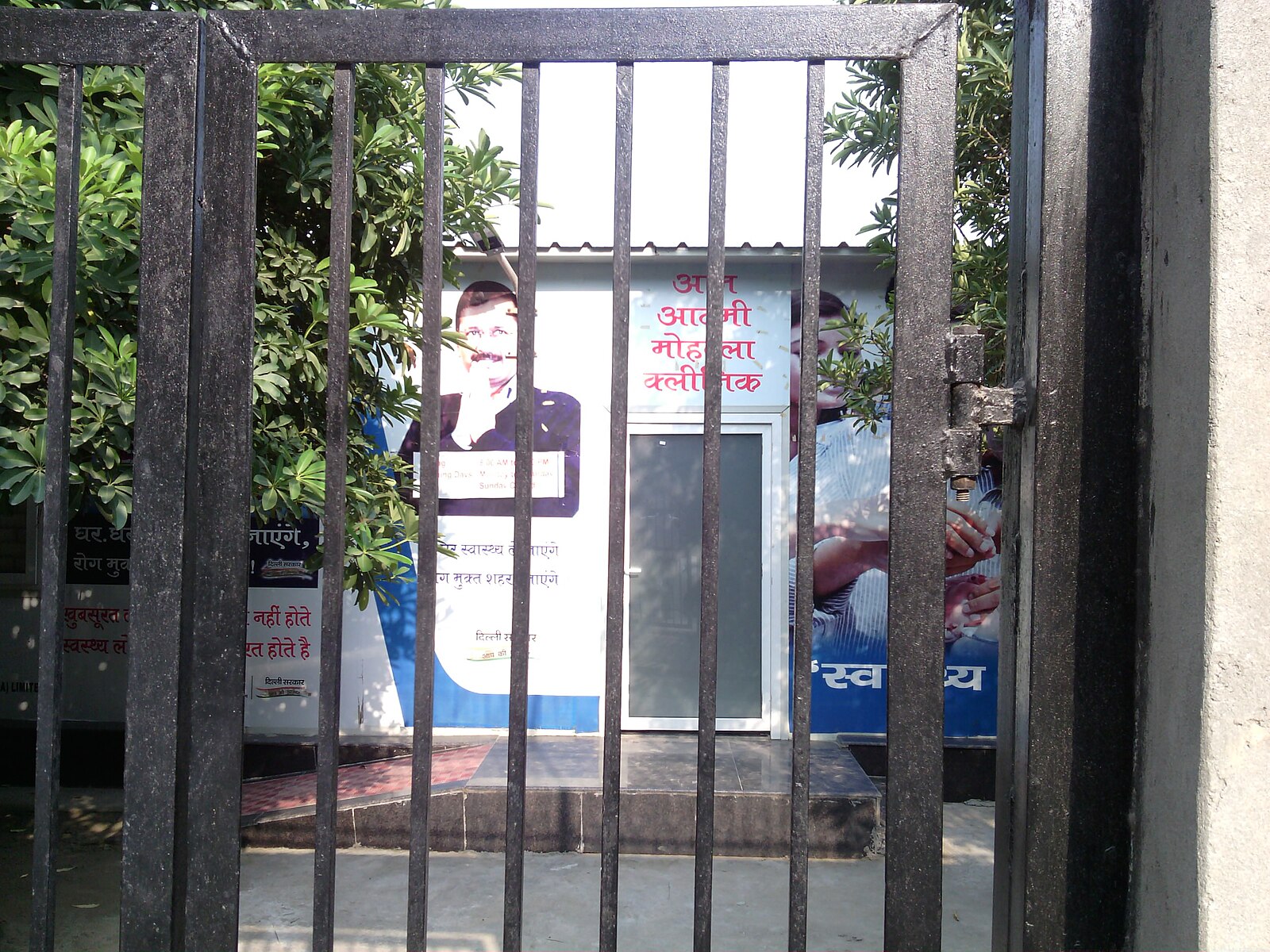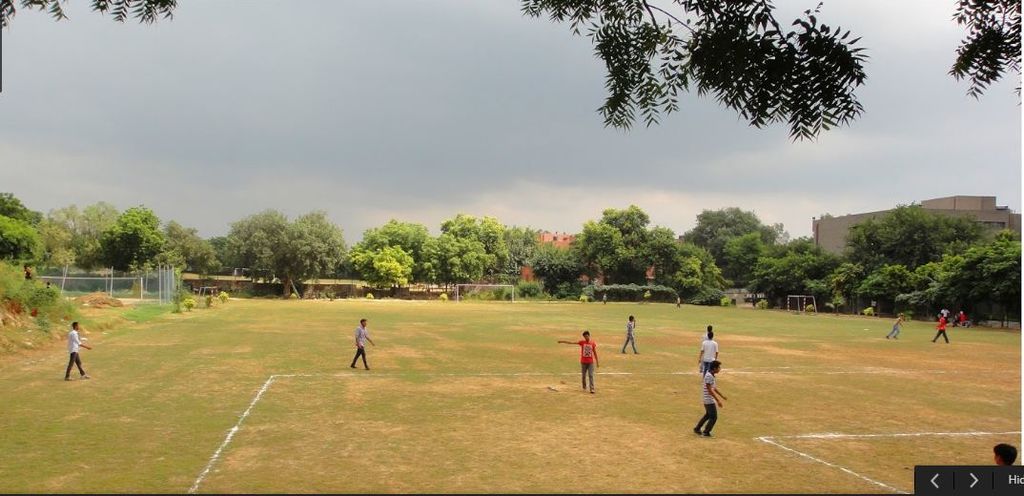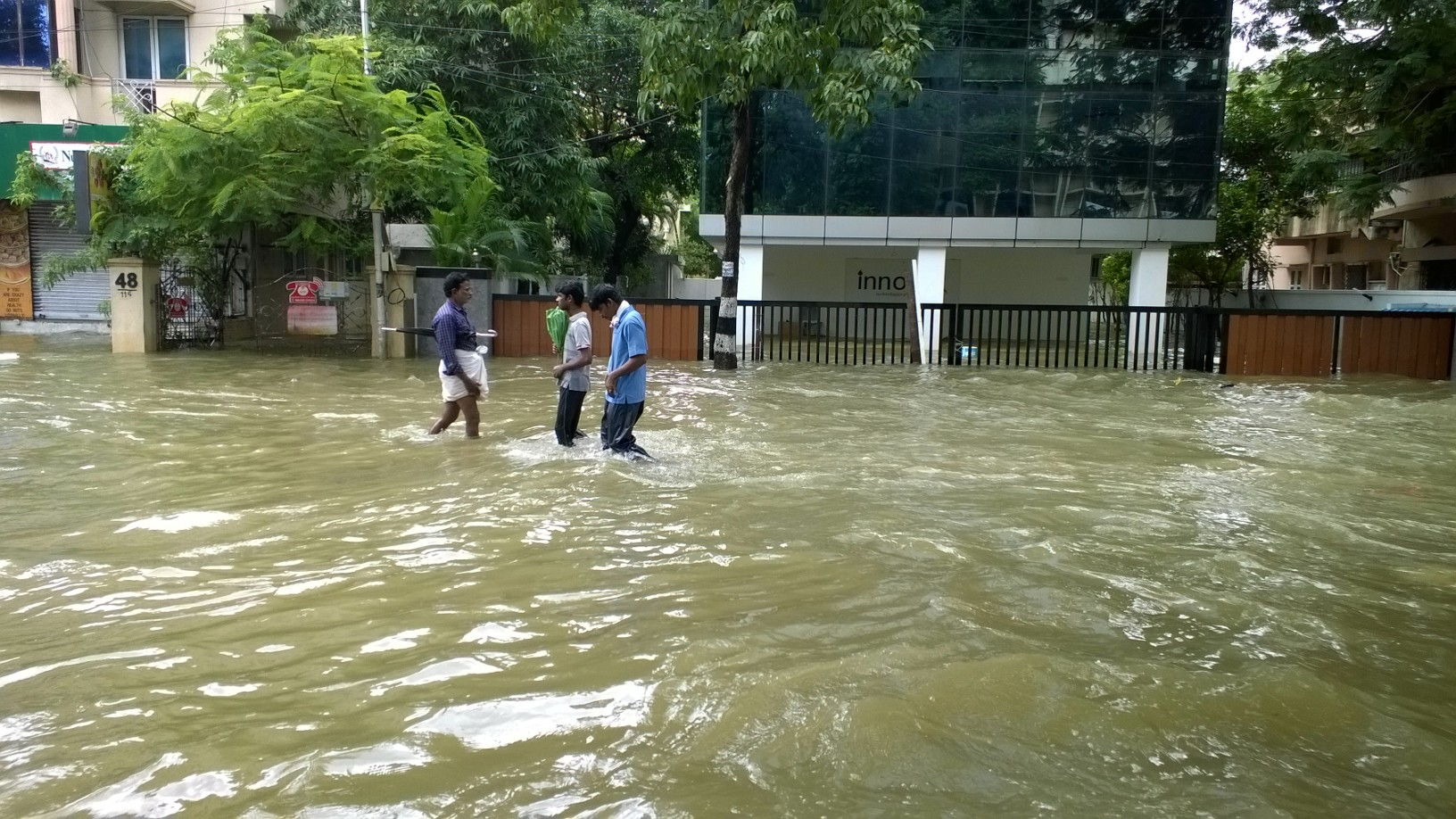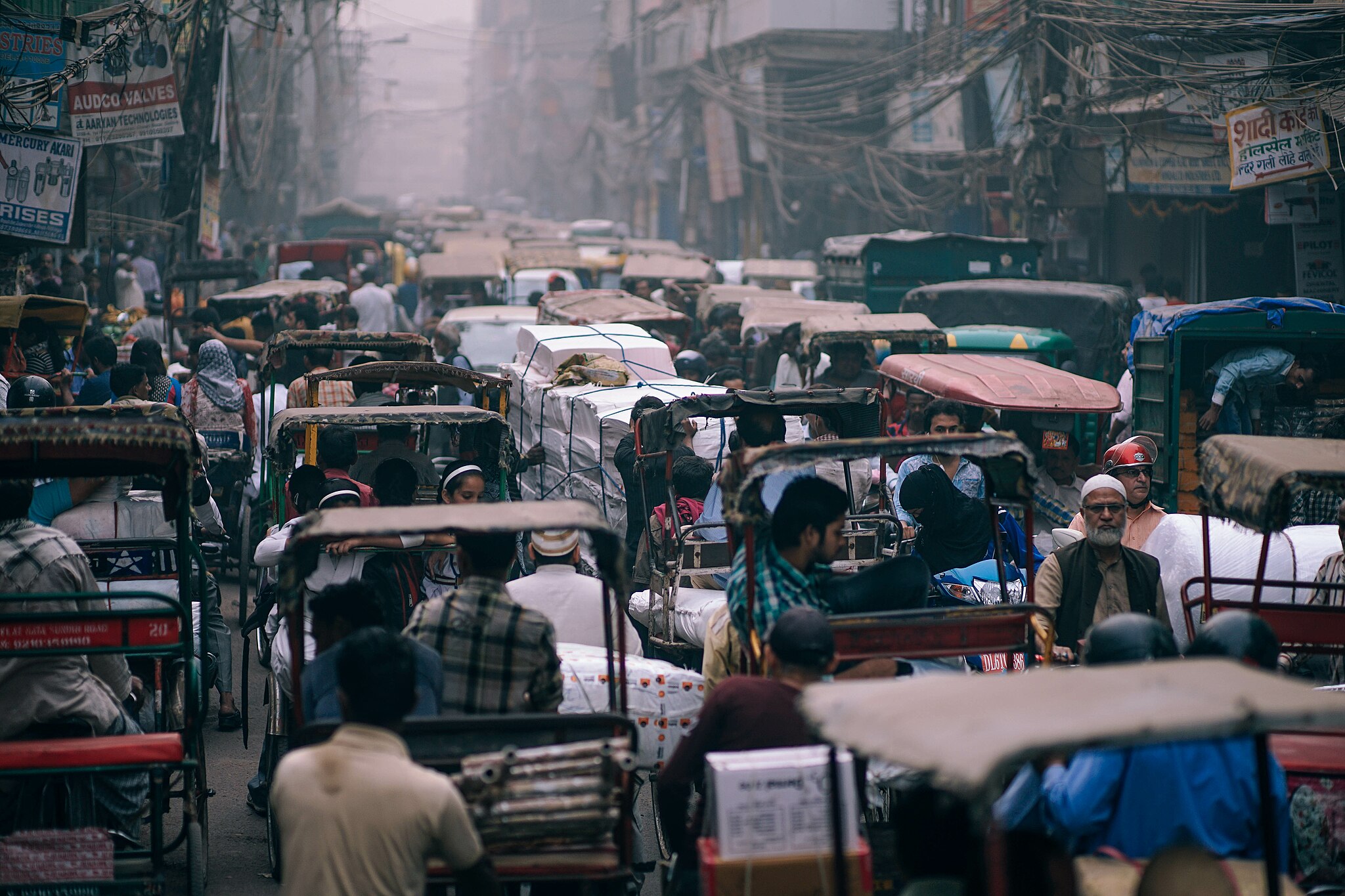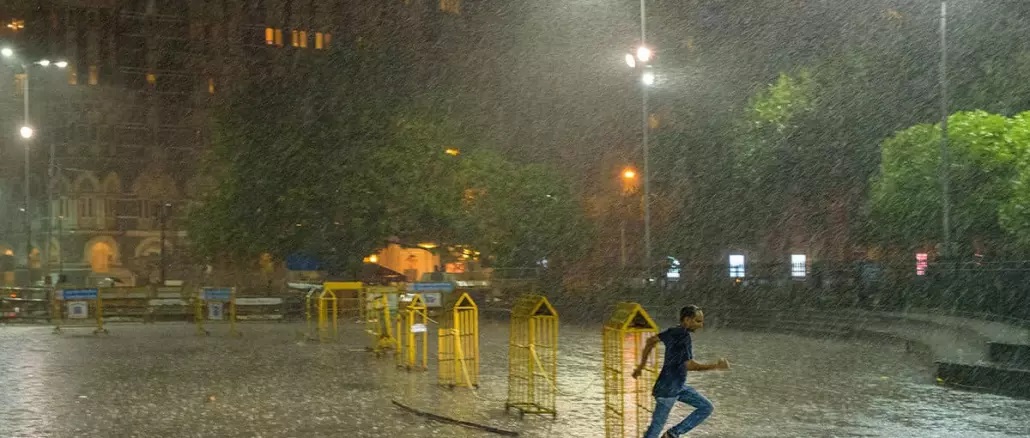What Delhi’s Climate Action Plan Says About Risks for the City
June 30, 2023 Kripa Krishna
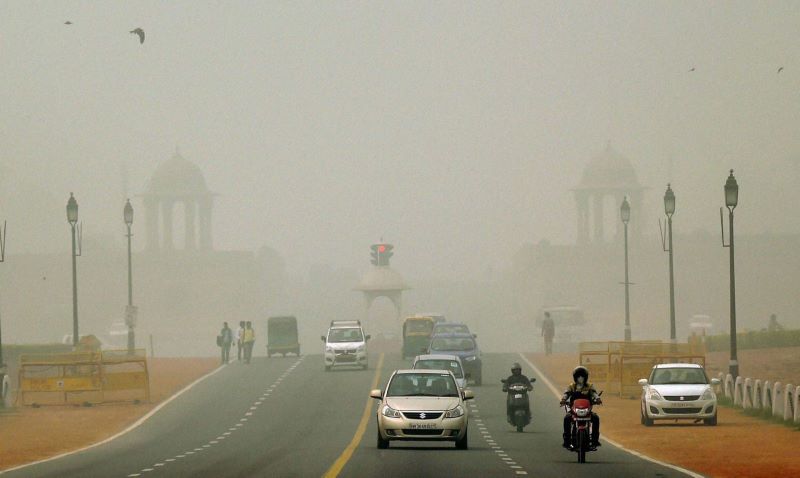
The Delhi Climate Action Plan is prepared by the Government of National Capital Territory (NCT) of Delhi. The plan identifies the risks that the city faces due to climate change, the vulnerabilities of different socio-economic populations that reside there, and details adaptation strategies and policy frameworks to tackle these issues.
Delhi is the only city/state with 97.5% of its population residing in urban areas. This concentration leaves the city’s population vulnerable to many risks of climate change which is detailed in the report. This article highlights the fragile urban systems of Delhi and delves into its primary risks.
Heatwave/Heat Stress
Since Delhi is a non-coastal city, it remains unaffected by sea-level rise. However, the city faces significant risks from extreme weather patterns, including intensifying temperatures, and rainfall.
According to the report, projections indicate that Delhi’s annual temperature is expected to rise by 1-4 °C by 2050. This exponential temperature increase, coupled with changes in the monsoon, has already made the residents of Delhi susceptible to heat-related ailments such as heat strokes, cataracts, respiratory disorders, and skin diseases.
Last year in May, the city experienced a record-breaking temperature of 49.2 °C, resulting in a surge in health-related emergencies. The report highlights that for every one degree rise in temperature above 29 °C, there is a four percent increase in the risk of mortality. The urban heat island effect exacerbates the heat stress, particularly in commercial areas of Delhi. The satellite imagery below shows the increasing land surface temperature(LST) in Delhi since 2014 where the bright red tones show regions with very high temperatures. The study conducted by the Centre for Science and Environment identified an increase of 9.8 °C in LST over the eight year period from 2014 to 2022.
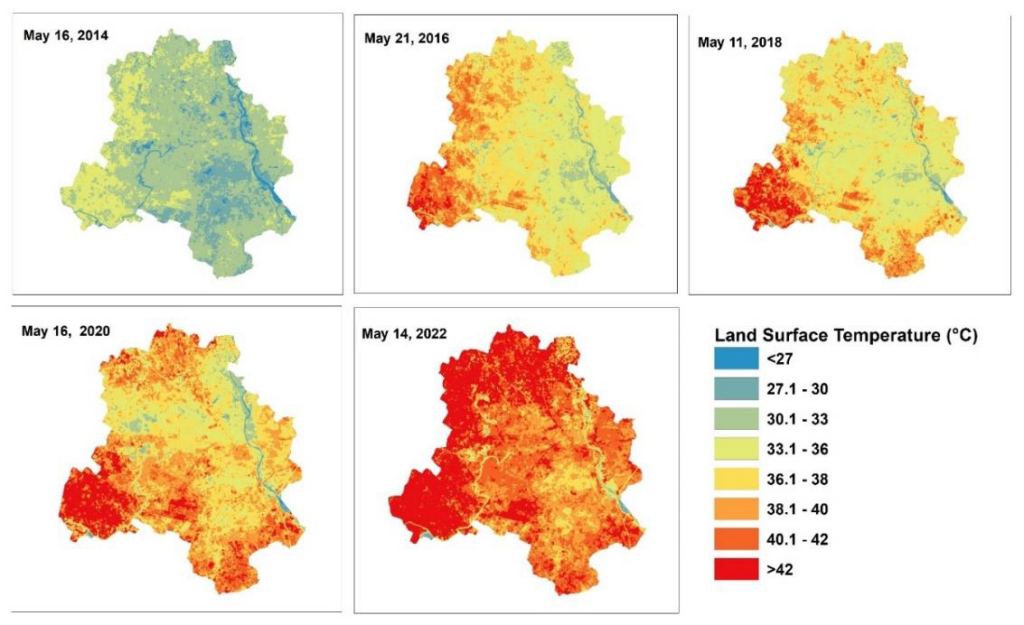
As a result of the rising temperatures there is a higher demand for energy which is consequently causing power shortages. A study conducted by the Indian Statistical Institute for Delhi reveals that a 1 °C temperature rise at 30 °C is projected to boost the annual electricity demand by over 7 million KWh by 2025.
It is worth noting that this surge in demand predominantly comes from the upper to lower-middle-class segments of Delhi. In contrast, the ecomonically weaker classes, which constitute around 52% of the city’s population and reside in informal settlements, lack access to basic amenities like regular electricity, making them highly vulnerable to temperature increases and electricity shortages.
Urban Planning
As the country’s capital, Delhi is perhaps the most affected by the rapid urbanization, where the population is noted to grow 4.1% every year (attributed to rural-urban migration). This means that there is decreasing space for other types of land use like agriculture.
With temperatures rising, forests and productivity of agriculture is also under threat, thus resulting in people moving from villages to cities. To cope with the rise in population, Delhi heavily invests in infrastructure, especially in the transport sector. However, the report notes that infrastructure is threatened by the extreme climate in the city leading to wear and tear of the existing infrastructure.
Furthermore, waste management poses the greatest challenge to the city as consumption increases. 69 million tons of waste is generated every year by Indian cities. In Delhi, there is a large amount of exposed, untreated waste. 20% of the waste generated is not collected and about 90% of the collected municipal solid waste is disposed of in landfills.
Delhi’s garbage is being dumped in four landfill sites at the moment- Bhalswa, Gazipur, Okhla, Narela-bawana. The landfills at Bhalswa, Gazipur, and Okhla have already reached their capacity and are being over-utilised owing to the lack proper infrastructure and space for waste management. In February 2023, the National Green Tribunal imposed a fine of ₹2,232 crore on the Delhi Government for the environmental damage caused by improper solid and liquid waste management.
The existing waste management system is perilously vulnerable to heavy rainfall as it is likely that exposed mixed waste will clog uncovered drains and contaminate groundwater. Further, such a system also makes the city more susceptible to vector borne diseases exacerbating the need to fix the planning and building climate resilient infrastructure.
Floodplain risk
The Yamuna River flowing through the city opens it up to floodplain risks in the light of climate change. Heavy rainfall can lead to dangerous flood situations, posing a threat to settlements located near these areas. Low-lying areas near the riverbed are especially at risk of waterlogging, increasing the vulnerability to disease outbreaks.
Another significant aspect is that the large majority of agricultural land in Delhi is situated in the Yamuna floodplains. These agricultural areas are prone to flash floods, making them vulnerable to the impacts of climate change on agriculture. Changing weather patterns, including increased temperature and intense rainfall, can further reduce the productivity of the land in Delhi.
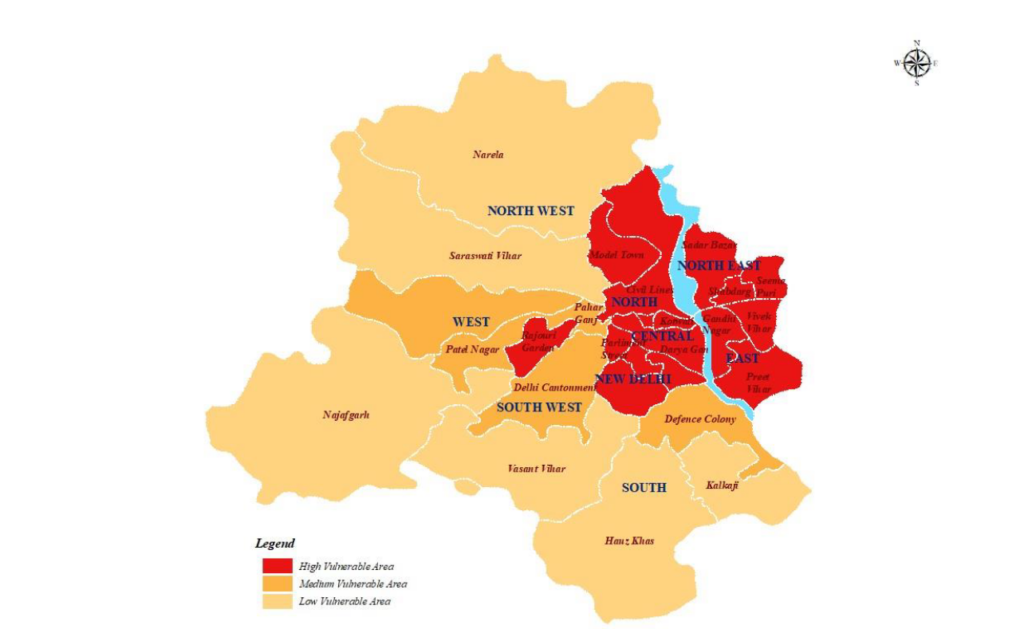
The above vulnerability map highlights the highly sensitive areas of Delhi based on parameters such as high population density, high population growth, low literacy rates, and high concentration of slum populations. These areas are situated close to the Yamuna River. They are disproportionately sensitive to the various impacts discussed earlier.
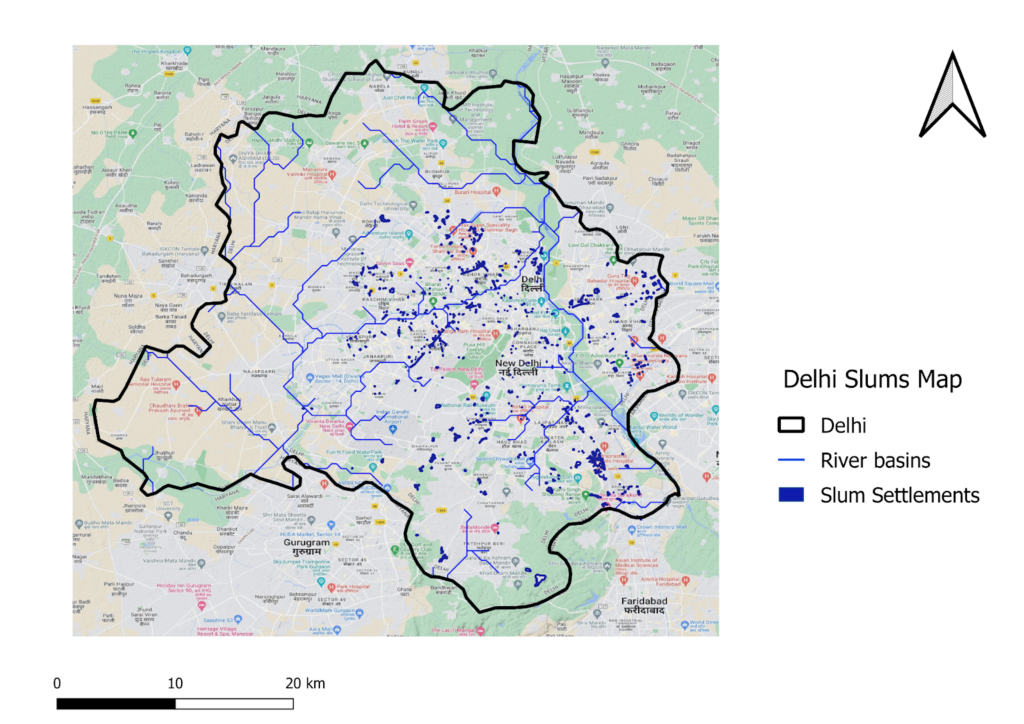
Further, there is a pattern recognised in the city where there is a higher deprivation in financial and physical capital, particularly in areas with a higher concentration of slum populations. As seen in the above map, slum settlements are concentrated near the river basins. These areas with high informal settlements also experience multiple deprivations in adaptive capacity making them more vulnerable to changes in the climate.
The slum settlement map and the vulnerability map show a parallel story, administrative wards like Mangolpuri North, Mangolpuri South, Gokulpuri, and Kondli are most affected by multiple deprivations. The presence of low-lying areas near the Yamuna River and the resettlement colonies in Mangolpuri and Gokulpuri, which mainly houses former slum dwellers, can explain the multiple deprivations observed in these areas.
Pollution
It is no surprise that Delhi’s pollution poses a significant risk to the city. According to the World Air Quality report, Delhi is one of the most polluted cities in the world, ranking fourth in terms of the PM 2.5 levels in 2022. It is nearly 100 times over the safety limit that the World Health Organisation has set.
The action plan report recognises that the major sources of pollution include transport, power and the industrial sectors in the city. The escalating population is subsequently increasing the usage of vehicles making the city have the highest number of registered vehicles in the country. Delhi being the nodal point for the five national highways and intercity rail corridors, it carries large volumes of passenger and goods traffic.
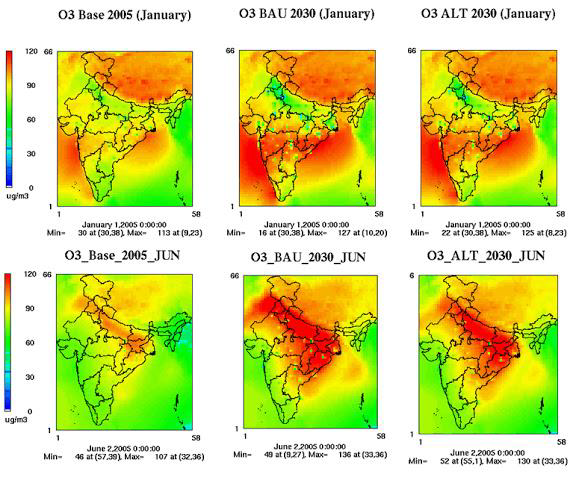
A significant contributor to pollution is the crop burning that takes place on the farms of neighboring states. The transfer of emissions from the burning to Delhi makes up for around 25% of the PM 2.5 pollution in the city as of 2022. Punjab had seen over 80,000 farm fires which contributed to 48% of Delhi’s pollution in the month of November.
Furthermore, with the poor air quality and common heat waves, India has become a hotspot for ozone pollution. Delhi, with its increasing risk of heat waves, is especially prone to the risk. This causes damage to the respiratory system causing many health complications. Again, this is also disproportionately affecting those with no infrastructure to protect themselves from the ozone, i.e., the poorer sections of society. In 2020, India was estimated to have the most ozone related deaths in the world. This pollution not only damages the population but also wreaks havoc on the food systems and threatens food security for the city and country.
The way ahead
The report highlights the vulnerabilities faced by the city in the areas of Health, Energy, Water, and Urban Planning. It acknowledges the existing adaptive measures in place in Delhi and proposes additional actions to enhance the city’s resilience to climate change.
The proposed plan emphasizes the construction of robust infrastructure capable of withstanding climate extremes. This includes the development of more hospitals and clinics, improved planning for drainage systems, climate-resilient water and road infrastructure. To combat the urban heat island effect, the report recommends increasing green spaces and city forests in Delhi, with the involvement of civic agencies in maintaining these green covers.
You can read the report to know more about Delhi’s plan to tackle climate change. Climate Action plans for Chennai, Mumbai, and Ahemdabad are also on our site. Plans for other major cities – Bengaluru, Hyderabad, Ahmedabad, Pune, Kolkata are still awaited.
